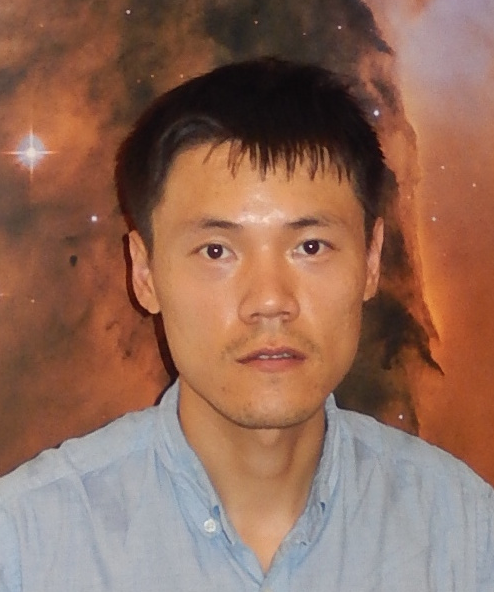
Spinning Up a Solution for Spin Liquids

For decades physicists and mathematicians have debated about the behavior of a particular kind of exotic matter. Now, a team of physicists including Xiao Chen, an associate specialist at UC Santa Barbara’s Kavli Institute for Theoretical Physics (KITP), have gleaned new insights into this phenomenon. Their findings appear in the journal Science Advances.
Particles have a property called spin. It’s responsible for the magnets we use on our refrigerators and in our hard drives. It also lends itself to some interesting, and potentially useful physics. You can visualize spin as an arrow pointed up through the axis of a tiny spinning ball. In some materials, neighboring particles prefer to orient their spins opposite each other, like a sheet of magnets aligning themselves north to south. This is easy to accomplish in simple grids, like a checkerboard; however, more complex ones foil such an easy solution.
In square lattices, four particles sit in each cell, so two can spin one way, and two the other. But this picture fails in certain cases. For instance, in a lattice of six-pointed stars, called a kagome, the cells are triangular. The odd number of particles per cell keeps the system from settling into a stable pattern. In these materials, the quantum fluctuations never stop flipping the particles’ spin directions. Scientists call this a spin liquid, because it never “firms up.”
Although quantum spin liquids don’t settle into a conventional order, they do take on a specific type of behavior. The problem is that, for the kagome lattice, different models yield two different behaviors, and scientists and mathematicians have debated for decades over which is the true ground state. The study by Chen and his colleagues W. Zhu of Los Alamos, Y.C. He of Perimeter Institute, and W. Witczak-Krempa of University of Montreal has shed new light on this quantum quandary.
The two possible phases behave rather differently. The first possibility is called a Dirac spin liquid, and it is quite sensitive to perturbations, which change the system’s global correlations. The other possibility is called a topological spin liquid, and its dynamics are resilient to small changes.
The team calculated the behavior of the spin liquid using a Heisenberg model, a method physicists use to represent a system’s energy. Next, they set up a numerical simulation to run an experiment.
In contrast to traditional measurements, the team computed a quantity called entanglement entropy. This concept quantifies the non-local correlations in quantum systems with many parts. They simulated a magnetic field passing through a cylinder whose surface was made of a kagome lattice. Both the equations and the simulation revealed a system that was highly sensitive to changes in the magnetic flux, indicative of a Dirac spin liquid.
The theoretical results bolster the case for those who suspect the system is a Dirac spin liquid, however they don’t close the debate. If this task were baking a dessert, you could say Chen and his collaborators created the recipe. Performing the experiment in real life would provide conclusive evidence. Unfortunately, this would be a tough cake to bake.
“One difficulty is threading the magnetic flux through the cylinder,” Chen said. “Another difficulty is the entanglement entropy: It’s an important concept, but it’s very hard to measure experimentally. You can only measure it for a very simple, few-body system,” he added. Chen does think the experiment would be quite illuminating if done successfully.
Spin liquids are both theoretically fascinating and possibly practical. For instance, spin liquids can have bubbles in them, like ordinary fluids. These are localized objects; they have an identifiable position and can move around, said Professor Leon Balents, the leader of the research group at the KITP to which Chen belongs. We can think of these bubbles as particles, and in quantum spin liquids they behave like quantum particles. Surprisingly, these bubbles behave like particles of matter, called fermions. They even interact in a way that mirrors the interactions between matter via the fundamental forces.
Chen and his colleagues are excited to apply their method to investigate the properties of other systems. “It’s a good method,” Chen said. “And there are a lot of 2D strongly-correlated systems, so we’ll use the same setup to explore the low energy properties of these systems.”
This research was supported by the Gordon and Betty Moore Foundation’s Emergent Phenomena in Quantum Systems Initiative.



